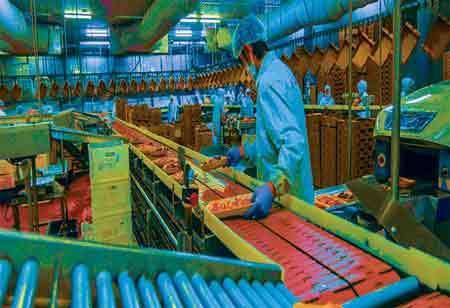THANK YOU FOR SUBSCRIBING
Be first to read the latest tech news, Industry Leader's Insights, and CIO interviews of medium and large enterprises exclusively from Food and Beverage Tech Review
Staying Ahead of Automated Packaging in the Beverage Industry
In beverage plants, automation is arguably more challenging because slow batch production often coexists with high-speed filling and packaging, which makes coordination challenging.

By
Food and Beverages Tech Review | Friday, March 17, 2023
Stay ahead of the industry with exclusive feature stories on the top companies, expert insights and the latest news delivered straight to your inbox. Subscribe today.
The challenges of beverage automation require the use of a combination of mechanical and digital strategies.
FREMONT, CA: In beverage plants, automation is arguably more challenging because slow batch production often coexists with high-speed filling and packaging, which makes coordination challenging. The high speeds of packaging equipment often incur interruptions, further complicating coordination with processing. Trade customers constantly demand more elaborate and customized packaging patterns, which require high levels of flexibility. A beverage automation project may involve mundane issues, such as keeping a system running and preventing interruptions, or more ambitious tasks, such as contextualizing data for predictive maintenance.
Meeting them requires a mix of mechanical and digital strategies.
Space: Conveyors with dedicated lanes are often used to feed specific stock-keeping units (SKUs). When SKUs are changed in case-packing or palletizing, gates or other diverters reroute them to different end-of-line equipment to handle the changes. Those factors have been a concern for years as large trade customers increasingly demand custom mixes for cases, six-packs, and even twelve-packs. Automation plays a role in such cases. For a variety pack at relatively high speeds, a robot can detrain a 24-pack of cans, place them in an accumulation area, and return them to the lanes.
Data: Data must be available and uniform across a system to be useful. The same goes for automation in general; digital controls should be standardized. Unfortunately, that's not easy to come by, especially in brownfield projects that retrofit existing facilities. An information architecture is also a requirement – a structure for software to transmit information. Most machinery feeds data and receives instructions via a PLC to a supervisory layer. This software can generate a high-level enterprise resource planning (ERP) application, which feeds the next layer. Despite this, the increasing information-technology capabilities of modern processing and packaging equipment threaten to upend this system. As opposed to working through a PLC or other controller, edge computing refers to smart equipment with built-in control and diagnostic capabilities. This has the potential to replace the traditional control software architecture, particularly in the context of the industrial internet of things (IIoT).
Digital: Automating presents various challenges and opportunities related to digital information - how to store, transmit, receive, and use it. An operator can control the equipment using a human-machine interface (HMI), the simplest form of use. Many floor staff, especially younger ones, need help deciphering the HMI attached to their equipment.
I agree We use cookies on this website to enhance your user experience. By clicking any link on this page you are giving your consent for us to set cookies. More info







